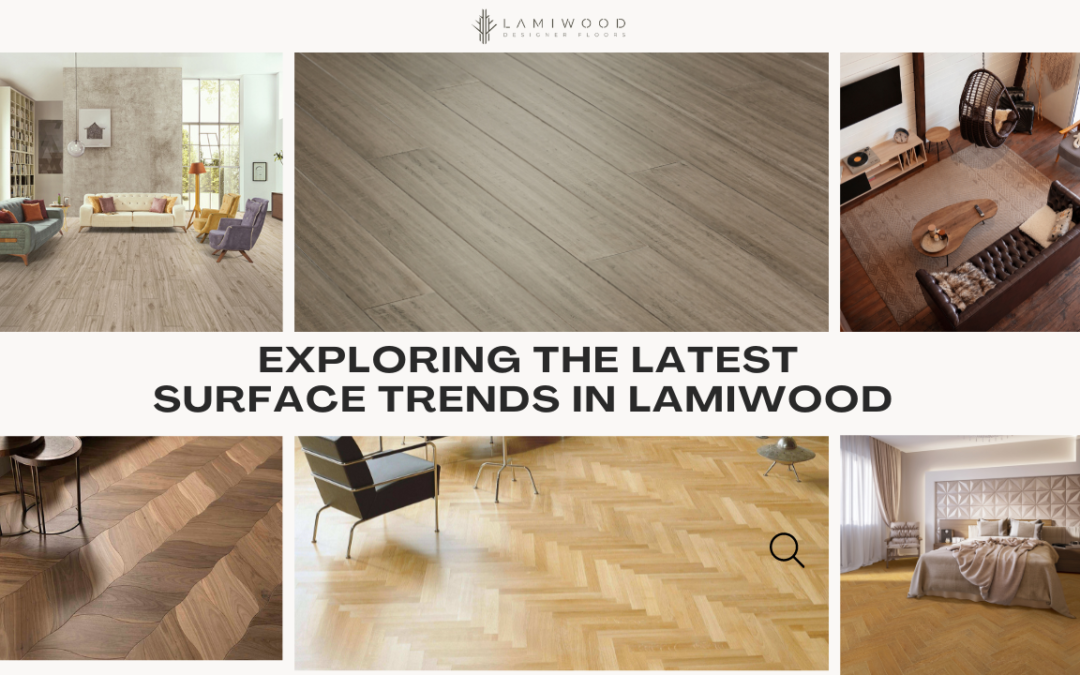In the ever-evolving world of interior design, wood flooring texture plays a pivotal role in creating spaces that are visually interesting and tactilely engaging. Lamiwood wood flooring, a popular choice for those seeking the perfect blend of durability and style, is no exception. Recent trends in lamiwood have seen a significant shift towards more textured and dynamic surfaces, moving away from the flat and uniform finishes of the past. This blog explores the latest surface trends, highlighting how these innovations are setting the stage for more expressive and character-filled interiors.
Embossed in Register (EIR) Technology
One of the most exciting advancements in lamiwood flooring is Embossed in Register (EIR) technology. This process aligns the texture with the visual pattern of the wood grain, creating an incredibly realistic wood-look surface. The EIR technique ensures that if you see a knot or grain in the image layer, you can feel it on the surface. This attention to detail adds depth and authenticity to lamiwood floors, making them virtually indistinguishable from real hardwood.
Hand-scraped and Distressed Finishes
For those who love the rustic charm of time-worn wood, hand-scraped and distressed lamiwood wooden flooring options are gaining popularity. These finishes replicate the irregularities found in reclaimed wood, such as scuffs, scratches, and indentations, offering an aged and vintage appeal. Hand-scraped lamiwood brings the artisanal feel of handcrafted wood floors into homes, without the high cost and maintenance associated with genuine antique wood.
High Variation Flooring
High-variation wood flooring is designed to mimic the natural color variation found in real hardwood floors. These floors mix planks with different shades and tones to create a vibrant, dynamic look. The trend towards high variation flooring is about embracing imperfection and the beauty of diversity, creating spaces that feel organic and lived-in. This trend is particularly appealing for those looking to add a unique and bold statement to their interiors.
Matte and Low-Gloss Finishes
While high-gloss wooden floors have had their moment, the current trend leans towards matte and low-gloss finishes. These subtler sheens offer a more natural and understated look, allowing the wooden flooring texture and color of the lamiwood to stand out without the distraction of excessive shine. Matte and low-gloss finishes also have the practical benefit of hiding scratches, dust, and footprints better than their glossy counterparts, making them ideal for busy households.
Stone and Tile Textures
Lamiwood is not limited to wood-like textures. Innovations in lamiwood technology have expanded its range to include stone and tile textures, offering even more versatility in wooden flooring Texture. These options provide the elegant look of natural stone or ceramic tiles with the comfort and warmth of lamiwood. Textured stone and tile lamiwood floors are perfect for creating sophisticated, high-end looks in kitchens, bathrooms, and entryways, where the durability and ease of maintenance of the flooring are particularly advantageous.
Conclusion
The rise of texture in lamiwood flooring reflects a broader trend towards more authentic, expressive, and tactile interiors. Whether it’s the realistic feel of EIR technology, the vintage charm of hand-scraped finishes, the dynamic appeal of high variation floors, the understated elegance of matte finishes, or the sophisticated look of stone and tile textures, the latest wooden flooring surface trends in lamiwood offer endless possibilities for personalization. As we continue to explore new ways to enrich our living spaces, the evolving textures of lamiwood flooring remind us that the foundation of any beautiful interior is not just how it looks, but how it feels underfoot.

